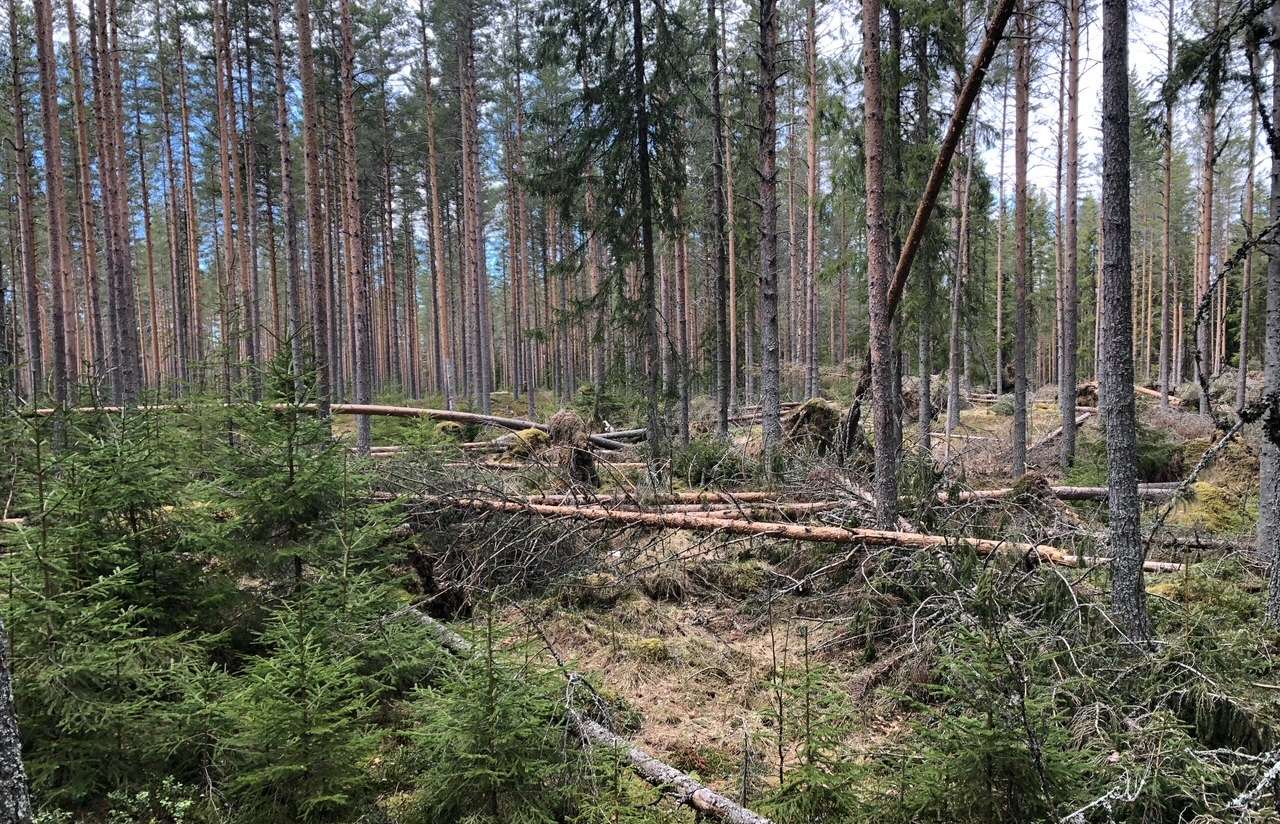Forests resilience against snow and storms

Photo: Harald Berger, SB Skog
Climate change may result in improved forest growth. At the same time, the extent of storm damages and top breakage from heavy snow loads seem to be increasing. To obtain more resilient forests in the future, tailored forest management is needed.
Climate change, with rising temperatures and more precipitation, will result in favourable growing conditions for most of Norway's forests. Increased growth means increased production potential for spruce – the most important tree species in Norwegian forestry.
However, climate change also means more wet snow and fewer days with frozen soil, which exposes the forest to greater risk of storm and snow damage. How vulnerable a spruce forest is, depends on soil conditions, topography and local and regional climate – and how the forest is managed.
A relevant approach to enhance tree stability is to customise, based on location, the regulation of tree density through pre-commercial thinning as well as during thinning at later development stages of a forest stand – and thereby reducing the risk of damage.
“Such measures, however, could lower production and carbon uptake if thinning is done excessively, or is done too late,” says research director and head of the National Forest Inventory Aksel Granhus.
Less soil frost and wetter soils in winter can also make trees less resistant to windthrow. Paradoxically, a warmer climate, with wetter soils and less snow, could therefore result in more damage to trees – even if storms do not become more common in the future.
The international research team collaborating in the project MARCSMAN “Maximizing Resilience and Carbon Sequestration in Managed Norway spruce forests” aims to obtain a better understanding of how management of Norway spruce should be tailored to different conditions with respect to risks of storm and snow damage. It will also develop tools for mapping forests that are vulnerable to such damage.
Contacts

Contacts

